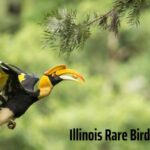Bird Training
Bird with Yellow Chest: Characteristics and Habitat Insights
When exploring the fascinating world of avian species, one striking group to consider is the bird with yellow chest. These birds, known for their vibrant plumage, can be found in various habitats across the globe. In this article, we will delve into the characteristics, behaviors, and habitats of these beautiful yellow-chested birds, highlighting their significance in the ecosystem. Let’s explore more details with Bird 04!
The Significance of the Color Yellow in the Natural World
Yellow in Mating
In the animal kingdom, the color yellow plays a crucial role in mating rituals. Many species use this vibrant hue to attract potential mates, showcasing their health and reproductive capabilities. For instance, male canaries display bright yellow plumage to draw the attention of females, signaling their vitality and suitability as partners.
Yellow in Camouflage
Some birds utilize the color yellow to blend into their natural habitats effectively. A prime example is the yellow warbler, whose light yellow feathers allow it to remain hidden among the foliage. This camouflage helps protect them from predators while they forage for food or care for their young.
Yellow as a Warning
Yellow can also serve as a warning signal in the animal kingdom. When combined with black, this color often indicates danger, deterring potential threats. For example, certain species of yellow birds have black markings that signal to predators that they are toxic or unpalatable, helping them avoid confrontation.
In summary, the color yellow holds diverse meanings in nature, from attracting mates and providing camouflage to serving as a warning signal, highlighting its importance in the survival and reproduction of various species.

Bird with Yellow Chest
Tropical Birds
Tropical regions are home to several striking bird species known for their vibrant yellow breasts.
- American Goldfinch: This small songbird boasts bright yellow plumage, especially during the breeding season. They thrive in open fields and gardens, often seen feeding on seeds and singing melodiously.
- Yellow Warbler: Known for its cheerful song, the yellow warbler features a golden-yellow breast and prefers wet habitats like marshes and riparian areas. Their behavior includes weaving intricate nests in shrubs to protect their young from predators.
- Common Yellowthroat: This small, elusive bird has a distinctive yellow breast and is often found in dense wetlands. Its camouflage helps it blend into its surroundings, and it is known for its distinctive “wichity-wichity-wich” call.
Temperate Birds
In temperate regions, several birds also display yellow breasts.
- Goldfinch: Similar to its tropical counterpart, the goldfinch has a bright yellow breast. These birds prefer weedy fields and are often seen in flocks, feeding on seeds and engaging in acrobatic flight.
- Yellow-Breasted Chat: This larger warbler has a vibrant yellow breast and is often found in dense thickets. Known for its varied songs and calls, the yellow-breasted chat is highly secretive and prefers habitats rich in vegetation.
Birds from Other Regions
In addition to tropical and temperate species, there are other birds with yellow breasts found in different parts of the world:
- Yellow-billed Cuckoo: Found in North America, this bird has a distinctive yellow breast and is known for its unique call. It inhabits wooded areas and is often seen foraging for insects.
- African Yellow Canary: Native to sub-Saharan Africa, this small bird has a bright yellow breast and is commonly found in grasslands and gardens. Their cheerful singing makes them a popular species among birdwatchers.
In summary, yellow-breasted birds can be found across various habitats, from tropical rainforests to temperate woodlands and beyond, showcasing the beauty and diversity of avian life around the world.
Reasons Why Birds Have Yellow Breasts
Genetic Factors
The coloration of feathers in birds is primarily determined by genetic factors. Specific genes dictate the pigmentation and pattern of feathers, leading to the vibrant yellow seen in many species. These genetic traits are inherited from parent birds and play a crucial role in defining the visual characteristics that can attract mates or serve other ecological functions.
Diet
The diet of certain bird species can also influence feather coloration. For instance, birds that consume foods rich in carotenoids—such as fruits and seeds—may exhibit brighter yellow hues. These pigments are absorbed and deposited in the feathers, resulting in more vivid coloration. As a result, a bird’s dietary choices can significantly impact its appearance.
Habitat
A bird’s habitat can affect its feather coloration as well. Environmental factors such as light conditions, vegetation, and even the presence of certain minerals in the habitat can play a role in how colors are expressed. For example, birds living in lush, green areas may develop brighter colors to blend in with their surroundings or stand out to potential mates, demonstrating the intricate relationship between environment and avian coloration.
In summary, the yellow coloration of birds’ breasts is influenced by a combination of genetic factors, dietary choices, and environmental conditions, each contributing to the beauty and diversity of avian species.
Conclusion
In conclusion, the bird with yellow chest not only adds a splash of color to our natural world but also plays a vital role in its ecosystem. By understanding their habits and habitats, we can appreciate their beauty and significance even more. Observing these vibrant birds enriches our experience in nature and highlights the importance of conservation efforts.





